By Jeff Nielson | Silver Gold Bull
As few people in our societies even know, all of the world’s governments have (foolishly) granted exclusive monopolies for the printing of all the world’s currencies (our “money”) to a cabal of privately-owned corporations called “central banks” – given that name because it is a cabal exclusively owned/operated by bankers.
Understand that the monopoly to print money is nothing less than a license for economic rape. These private banks lend us all the paper that they print out of thin air (at zero cost to themselves). The result is that after roughly 100 years of this economic rape we have (collectively) paid these banks $trillions in “interest” for nothing, and currently owe them $10’s of trillions for nothing. History’s single greatest act of legal theft.
Indeed, these bankers have stolen such unimaginably huge sums of wealth from our societies that the Thieves now voluntarily return most of the additional amounts they steal each year. There are two reasons for this act of pseudo-remorse. To begin with, with the Little People drowning in debt individually, and with our nations drowning in debts collectively; the Thieves were/are worried that their Victims might actually notice them sitting on top of their mountains of (stolen) money.
However the second reason – the real reason – is that the countless $trillions that these central banks have stolen from us are literally just the tip of the iceberg during their reign of legal-crime. This private cabal of central banks has not only been given monopolies to print money out of thin air for their own benefit, but thanks to the abominable euphemism which they call “fractional-reserve banking”; they are allowed to delegate their License to Steal to other private banks.
Specifically, for each dollar that the central bankers lend to their other banker-friends (at zero/near-zero interest rates); these private banks are allowed to print ten more dollars out of thin air, and lend them to the Little People (at higher rates of interest). Thus the central banks don’t mind returning most of the additional money which they steal each year, since their own thievery only represents 10% of the total banker-plundering of the wealth of all economies.
What is the inevitable result of a capitalist system where every new dollar that is used to fuel the economy is lent into existence? Debt Slavery: the ultimate goal of every (paper) fiat currency system.
There is now somewhere in excess of $200 trillion in debt sloshing around the global economy, most of that debt being totally fraudulent, in that it is interest paid to bankers (literally) for nothing. Somewhere around 25% of every dollar earned by all of our Western economies is now paid to these banker-parasites as interest on their fraudulent debts. The bankers would like to steal even more, but already all of our economies are teetering on the verge of bankruptcy.
Greece was already forced to default, and the U.S. (the world’s largest Deadbeat Debtor) is only able to ward-off debt-default by fraudulently maintaining its own interest rate at zero percent. Put another way, if U.S. interest rates had ever reached the same level as those which were inflicted on Greece by Wall Street’s economic terrorists; the U.S. would have defaulted even faster than Greece. It would have required the U.S. government to quadruple tax revenues just to pay the interest on its own (fraudulent) debt.
Having enslaved us all with debt thanks to being granted their License to Steal, history’s greatest thieves are also history’s greatest hypocrites. Whenever one of our (subservient) governments has the audacity to actually suggest taking a closer look at the bankers’ Theft Monopoly; the Thieves look down their noses, point their fingers at us, and accuse of us “threatening their independence.” Yes, there is no one who places a higher price on his own freedom than the Slave Master. What about our independence?
The latest example of this supreme hypocrisy comes from (surprise, surprises) Benjamin Shalom Bernanke. Feeling especially pleased with himself after his two-day love-fest with the banker sycophants of the U.S. Congress; B.S. Bernanke chose that moment to launch yet another attack at Rep. Ron Paul – and his “Audit the Fed” bill.
Bernanke’s specific accusation? As paraphrased by the Corporate Media, Bernanke whined that “the ability to review monetary policy decisions…could compromise central bank independence.” This is by no means a new argument. Indeed, it is the Big Lie which the banker-thieves have hid behind for a hundred years – since it has never had a shred of validity.
The Big Lie is based on the artificial/arbitrary distinction of all economic policies as being either “fiscal policy” (the realm of government) or “monetary policy” (the realm of private bankers). The obvious fiction here in attempting to create some invisible wall between the two groups of policy-makers is that there is only one economy.
Pretending that the fiscal policy of an economy can act “independently” of monetary policy (or vice versa) is precisely as absurd as suggesting that a car’s transmission could operate “independently” from the engine. Indeed, this metaphor is very useful since the analogy of the fiscal and monetary policy of an economy and the engine and transmission of a car is precisely parallel.
As with a car’s engine, fiscal policy “powers” any/every economy, since it represents the physical economy itself. Conversely, monetary policy is merely the throttle (or “transmission”) which regulates the speed of the economy. Obviously neither of these elements can ever possibly be fully “independent” of the other. It is equally obvious in both these pairings which must be the dominant component and which must be the subordinate component.
With every car, its transmission is clearly subordinate to its engine. It is transmissions which are designed to optimize engine performance, and not engines being designed to optimize any particular transmission. Similarly, it is monetary policy which must naturally/automatically be subordinate to fiscal policy, rather than fiscal policy being designed to cater to the whims of private bankers (i.e. the Thieves). The Tail cannot be allowed to wag the Dog.
Thus when B.S. Bernanke claims that central banks “must maintain their independence” he is not uttering some profound truth. Rather, he is merely repeating the bankers’ Big Lie, a vacuous fiction which as a matter of simple logic never could have any validity. It is a Lie with one very obvious purpose: to minimize scrutiny as a small cabal of bankers perpetrate theCrime of the Millennium.
With our nations (and most of their citizens) drowning in fraudulent debts while the bankers sit on their mountains of ill-gotten money, it literally adds insult to injury for these bankers to arrogantly maintain we (the ones who granted them their License to Steal) have no right to take a closer look at how they have been robbing us blind for the last century.
This would probably be a good time to remind the Thieves how History tends to (eventually) reward them for their deeds. Less than a week after a news item appeared out of Iran reporting that the Iranian government had executed several bankers for a multi-billion dollar act of serial fraud, an interesting article appeared (ironically) on the blog for the Wall Street Journal itself.
The writer of that article notes the following:
The Code of Hammurabi, more than 3,700 years ago, stipulated that any Mesopatamian who violated the terms of a financial contract – including the futures contracts that were commonly used in commodities trading in Babylon – “shall be put to death as a thief.”
…In medieval Catalonia, a banker who went bust wasn’t merely humiliated by town criers who declaimed his failure in public squares throughout the land; he had to live on nothing but bread and water until he paid off his depositors in full. If, after a year, he was unable to repay, he would be executed…Bankers who lied about their books could also be subject to the death penalty.
In Florence during the Renaissance, the Arte del Cambio…made the cheating of clients punishable by torture…
But financial crimes weren’t merely punished; they were stigmatized…
Contrast that with our modern societies where “punishment” for so-called white-collar crime is (at worst) nothing but a slap on the wrist in comparison to punishment handed out for blue-collar crime: the crimes of the Little People. The entire basis of this two-tier justice was the presumption (never supported with evidence) that the rich did not require as much deterrence from crime as the poor – and thus the sentences for their misdeeds did not need to be as severe.
Today, as the bankers now openly confess to a single act of fraud which they themselves estimate is roughly $350 trillion in scope, well over 90% of all crime in the world (by dollar value) is now white-collar crime. Meanwhile, we just had 25% of Wall Street executives confess that crime was a way of life in banking (and presumably the other 75% were lying).
In short, never in all of human history has white-collar crime required such maximum deterrence. I suggest to all these Thieves that they not only study their history books, but (for those based in the U.S.) that they also take a glance toward Death Row, and contemplate what “maximum deterrence” means in the 21st century U.S.A.
-
Further Reading:
Like this:
Be the first to like this.

 In today’s
In today’s 




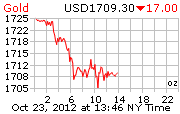
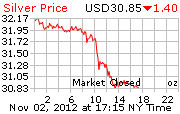
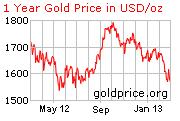
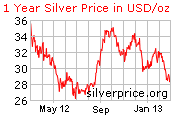
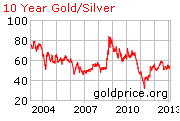
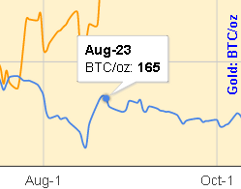
Fractional Reserve Banking, Government, and Moral Hazard
By Ron Paul | Texas Straight Talk
Last week my subcommittee held a hearing on fractional reserve banking and the moral hazard created by government (taxpayer) insured deposits. Fractional reserve banking is the practice by which banks accept deposits but only keep a fraction of those deposits on hand at any time. In practice, nearly 100% of deposits are loaned out, yet depositors believe that they can withdraw the full amount of their deposit at any time. Loaned funds are then redeposited and reloaned up to the limit of the bank’s reserve requirements, compounding the effect.
As Murray Rothbard put it, “Fractional reserve banks … create money out of thin air. Essentially they do it in the same way as counterfeiters. Counterfeiters, too, create money out of thin air by printing something masquerading as money or as a warehouse receipt for money. In this way, they fraudulently extract resources from the public, from the people who have genuinely earned their money. In the same way, fractional reserve banks counterfeit warehouse receipts for money, which then circulate as equivalent to money among the public. There is one exception to the equivalence: The law fails to treat the receipts as counterfeit.” *
-
While mainstream economists extol this “money multiplier” as a nearly miraculous process that results in a robust economy, low reserve requirements actually enable banks to create trillions of dollars of credit out of thin air, a process that distorts the structure of production and gives rise to the business cycle. Once the boom phase of the business cycle has run its course and the bust commences, some people will naturally look to hold cash. So they withdraw money from their bank accounts in order to hold physical currency. But bank deposits consist of a huge amount of credit pyramided on top of a small of amount of original cash deposits. Each dollar of cash that is withdrawn unwinds the multiplier, resulting in a contraction in credit. And if depositors en masse attempt to withdraw more funds than are available in reserves, the entire of house of cards comes crashing down. This is the very real threat facing some European banks today.
Since the amount of deposits always exceeds the amount of reserves, it is obvious that fractional reserve banks cannot possibly pay all of their depositors on demand as they promise – thus making these banks functionally insolvent. While the likelihood of all depositors pulling their money out at once is relatively rare, bank runs periodically do occur. The only reason banks are able to survive such occurrences is because of the government subsidy known as deposit insurance, which was intended to backstop the stability of the banking system and prevent bank runs. While deposit insurance arguably has succeeded in reducing the number and severity of bank runs, deposit insurance is still an explicit bailout guarantee. It thereby creates a moral hazard by encouraging bank deposits into fundamentally unsound financial institutions and contributes to instability in the financial system.
The solution to the problem of financial instability is to establish a truly free-market banking system. Banks should no longer have a government backstop of any sort in the event of failure. Banks, like every other business, should have to face the spectre of market regulation. Those banks which engage in sound business practices, keep adequate reserves on hand, and gain the confidence of their customers will survive, while others fall by the wayside.
Banking, like any other financial activity, is not without risk – and the government should not continue its vain and futile pursuit of trying to eliminate risk. Get government out of the way and allow the market to function. This will result in a more stable system that meets the needs of consumers, borrowers, and investors.
* Murray N. Rothbard, The Mystery of Banking, 2nd ed. (Auburn, Alabama: Ludwig von Mises Institute, 2008), p. 98.
-
Congressman Ron Paul of Texas enjoys a national reputation as the premier advocate for liberty in politics today. Dr. Paul is the leading spokesman in Washington for limited constitutional government, low taxes, free markets, and a return to sound monetary policies based on commodity-backed currency. He is known among both his colleagues in Congress and his constituents for his consistent voting record in the House of Representatives: Dr. Paul never votes for legislation unless the proposed measure is expressly authorized by the Constitution. In the words of former Treasury Secretary William Simon, Dr. Paul is the “one exception to the Gang of 535″ on Capitol Hill.
-
For further reading:
Share this:
Like this: